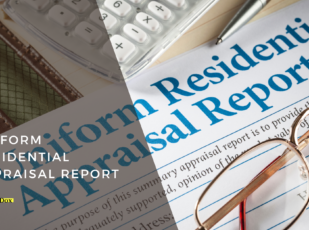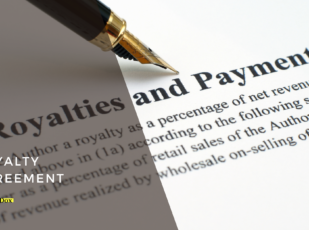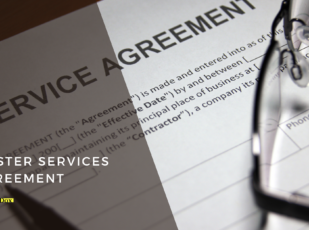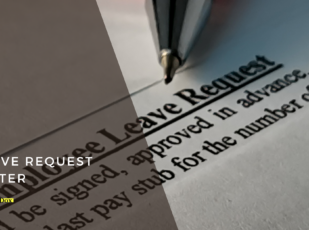
Sublease Agreement Template
6 Downloads
Real Estate
December 19, 2024
Sayantani Dutta
A Sublease Agreement is a crucial document for anyone looking to rent out part or all of their rental property to another tenant. Whether you’re a tenant who needs to temporarily vacate your apartment or a landlord permitting a sublease, it is extremely important that the rights of both parties are protected. And the tool that can do this single-handedly is the Sublease Agreement—a clear and legally sound legal document for tenants and subtenants.
In our guide today, we are going to take a closer look at the essence of the Sublease Agreement. We will also be highlighting its importance and the potential risks of relying on an inadequate agreement template (which many seem to be quite fond of!). In the end, we will present the ultimate solution to your subleasing needs—FreshDox.com’s very own Sublease Agreement Template professionally developed by legal experts specializing in real estate.
So, without further ado, let’s dive right into it!
What is a Sublease Agreement?
A Sublease Agreement is a legal document that allows an original tenant (the sublessor) to rent out their leased premises, or a portion of it, to another party (the sublessee) for a certain period within the original lease term. Keep in mind that not all original lease agreements allow for this! If it is allowed, the tenant can get a new tenant (subtenant, technically) as per a new set of rules, which are more or less a subset of the original lease agreement.
This agreement is particularly useful for tenants who need to vacate their rented space temporarily but wish to retain their lease for future purposes. There could be a variety of reasons why you want to do this, and the sublease agreement will cover those reasons as well, to the extent you want them to be known.
In essence, the sublease agreement spells out the terms and conditions of the sublease, including its duration, rental amount, and obligations of both the sublessor and the sublessee.
Sublease Agreement: Key Elements
Such a document needs to include much more information than just clauses such as “The monthly rent has to be paid on the Nth day of each month.” In fact, the terms of the sublease need to be quite strict. Otherwise, the primary renter might face legal repercussions from the property manager or landlord.
Assuming you have the landlord’s approval for the same within your rental agreement, you can sublet your occupancy and decide on the rent payments as per your discretion. Let’s now look at the key ingredients of a sublease agreement.
First of all, you should clearly identify all parties involved and the premises being subleased, including the address of the property. By doing this, you essentially become a sublandlord. Once the contact information and such are out of the way, clarify the specifics regarding the duration of the sublease. This includes the end of the term until which the possession of the premises is being granted through the sublease contract.
Next, the sublease agreement discusses the amount of rent, payment schedules, and security deposit details. Also mention any late fees that will apply to delayed rent payments. Any additional terms about money, such as the duration beyond the end date by which the deposit will be returned, should also be included for legal soundness.
The sublet agreement also covers the terms governing utilities, maintenance, and repairs. You can keep it very simple by just offloading your own responsibilities in this regard upon the subtenant. Or, you can put in your own guidelines just to be on the safe side. Stricter regulations, especially for temporary occupancy, often lead to better results. For example, you can lower the limits on what is considered reasonable wear.
Next, offer the specific conditions under which the original lease and sublease can be terminated. Following this, you can also mention all the restrictions or allowances for further subleasing, if you want the subtenant to also have the ability to further sublease the property. Or, you can simply prohibit it in the sublease agreement to avoid that mess.
In the end, the document will have the signatures of both the sublessor and sublessee, which affirms mutual understanding and makes the agreement legally binding.
Keep in mind that if the landlord’s consent is for subletting without specifying the purposes you can sublease for, it most likely does not cover a commercial sublease. It is always best to clarify everything with the landlord or the terms of the master lease before you sit down to draft the terms of this sublease.
Why is a Sublease Agreement Important?
The primary objective of having a sublease agreement (and not a verbal understanding when letting someone else occupy the premises that you are a renter of) is to put in legal safeguards in place—for all parties involved. By doing this, you are essentially ensuring that the sublessor can sublet their space without violating their original lease agreement.
On the other hand, this agreement provides the sublessee with a clear understanding of their rights and responsibilities in their temporary home.
When you draft a comprehensive, legally sound sublease agreement, you are minimizing or outright eliminating any prospect of disputes. Note that this can only be done if you are specifying the terms of occupancy, payments, and the use of the property in great detail.
The sublease agreement, therefore, is an important tool that helps out with a smooth subleasing process. Without it, there is no legal backing here, and disputes can arise leading to expensive legal battles.
Inadequate Sublease Agreements
If you don’t want to go straight to eviction or to court, you would do well to draft a comprehensive sublease agreement. This is tricky stuff—putting all the terms and restrictions can be particularly tricky. Any scope of ambiguity and you are opening yourself up to unfair exploitation, damages to your property, or litigation down the line.
Suffice it to say that with an inadequately drafted sublease agreement, you are inviting significant risks with open arms. Without a clear, detailed document, misunderstandings can arise over everything—rent payments, property maintenance, the rights and obligations of each party, and so on.
Ideally, we don’t want any of that.
An ambiguous agreement (often the result of a free sublease agreement that fails to cover all legal bases or something purchased off Craigslist) also sometimes fails to provide adequate legal protection if disputes shall escalate to legal action. This, in turn, leaves the original tenant liable for any breaches of the original lease caused by the subtenant!
That is why we highly recommend against the reliance on generic, one-size-fits-all templates found online. They do more harm than good by exacerbating the risks. They often don’t follow state laws, have no severability clauses, and can easily get thrown out of court on grounds of being incompetent.
Overlooking specific details pertinent to the individual lease situation is a running theme among these templates. Don’t download this risk!
Presenting FreshDox.com’s Premium Sublease Agreement Template
We know that the nuances of subleasing can be difficult to deal with. It is generally quite hard to follow the governing law and draft a sublease agreement with confidence. That is where FreshDox.com’s Sublease Agreement Template comes into the picture. Our meticulously designed template is vetted by legal experts to address the specifics of subleasing. It is a customizable and comprehensive solution to safeguard the interests of both the sublessor and sublessee.
You can customize and download our template in MS Word or PDF format.
Choosing FreshDox.com’s template ensures that your sublease agreement is not only legally compliant but also tailored to the specific needs of your subleasing agreement because we have what no generic, free template does—the ability to add, edit, and remove relevant sections and state-specific regulations in and out of the template when drafting online.
Our platform offers access to a wide variety of legal and professional document templates, each developed to meet the highest standards of clarity, legality, and user-friendliness and developed by domain specialists and legal experts.
So, what are you waiting for!? Subscribe to FreshDox.com today and enjoy the benefits of both our membership plans using our 14-day trial period. The Basic Plan is ideal for those with a minor requirement. It allows you to download up to three document templates per month. On the other hand, we have the Premium Membership for those with more regular and ongoing needs—with no upper limit to how many templates you can edit and download!
Whether you are dealing with a single sublease or managing multiple properties, FreshDox.com equips you with the necessary resources to execute subleases efficiently, legally, and completely safely. Protect your rights, fulfill your responsibilities, and ensure a successful subleasing experience with FreshDox.com’s Sublease Agreement Template today! Our commitment to quality, combined with our comprehensive approach to legal documentation, makes FreshDox.com the ideal partner for your subleasing needs. Avoid the pitfalls of inadequate agreements and approach your subleasing requirements with confidence, security, and peace of mind.
Related Templates
Discover more templates that align with your needs and preferences.

Ready to Sign Up?
Sign up for FreshDox.com’s 7-day trial and discover why so many individuals and businesses trust us for their legal document template needs.
- Cancel any time
- 7-day free trial
- From 300+ Customer Reviews
















